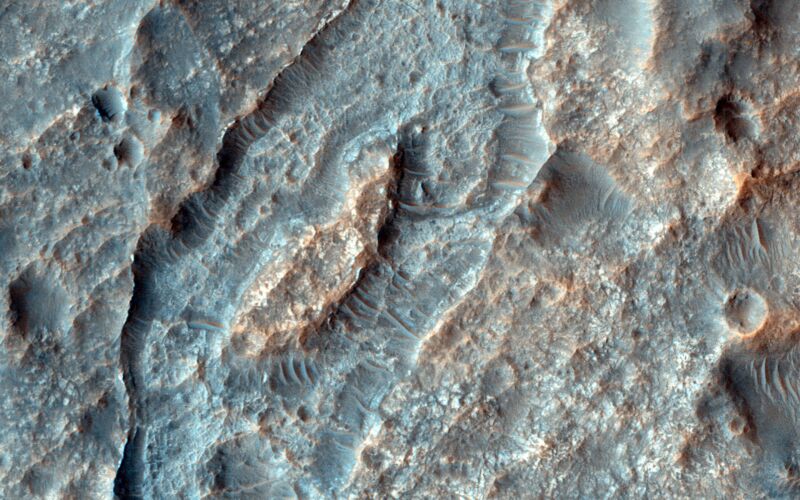Mars experienced a precursor to plate tectonics

Enlarge / Ridges and basins in the Eridania Basin on Mars. (credit: NASA/JPL-Caltech/University of Arizona)
Early in Earth's history, the heat left over from the collision that formed the Moon left its surface an ocean of magma. As it cooled, its crust was frequently shattered by massive impacts that dwarfed the one that did in the dinosaurs. Somewhere in between that and the onset of plate tectonics, it's thought that a distinct process caused parts of the crust to sink, while volcanism brought material to the surface that would later form the continental crust.
While we can model this period, we can't really search for evidence to back our models since any of this early crust has been eroded or transformed by the plate tectonics that eventually ensued. However, a team of researchers suggests that there might be a way to see what this process looked like, and it doesn't involve a time machine. Instead, it involves studying the surface of Mars.
Lots of volcanoesOn Mars, plate tectonics never got going. So, while some areas of the planet have been transformed in a way that keeps us from studying the earliest periods of Mars' history-looking at you, Olympus Mons-scientific consensus is that nearly half of the planet's surface is over 3.6 billion years old. This provides the opportunity to study processes that occurred in the first half-billion or so years after Mars formed.